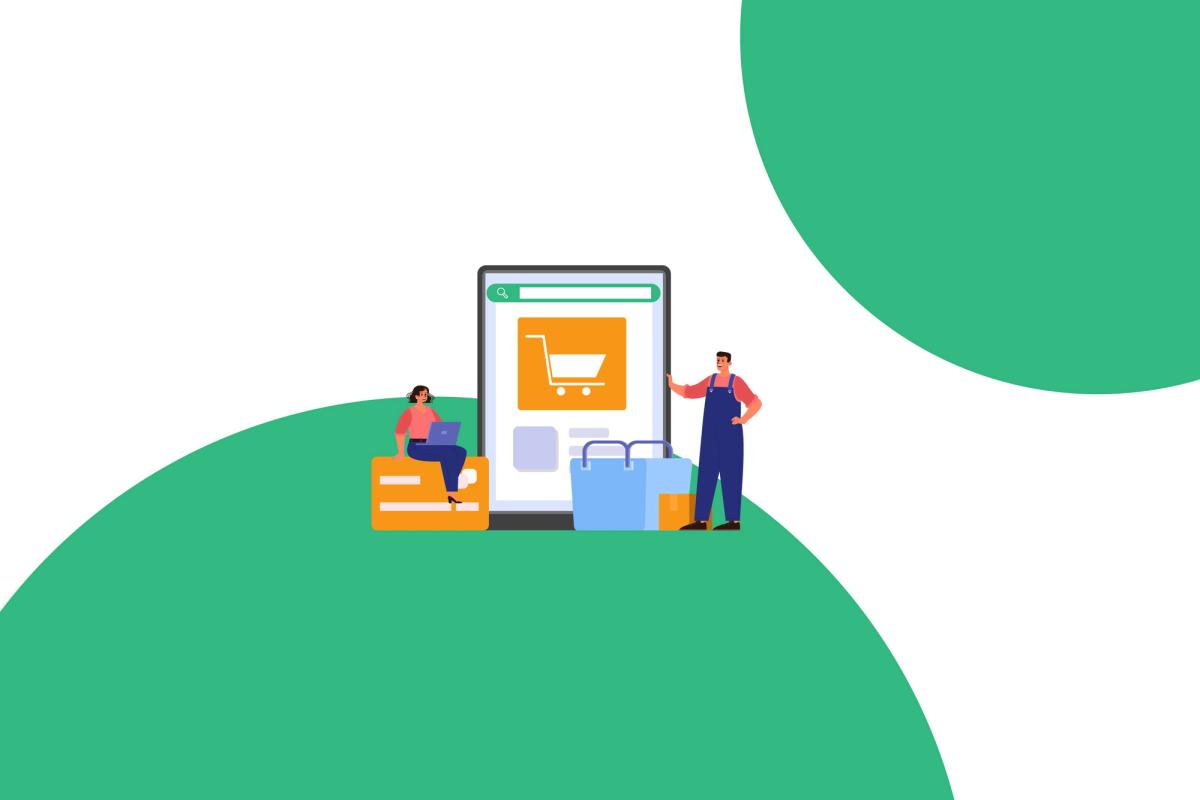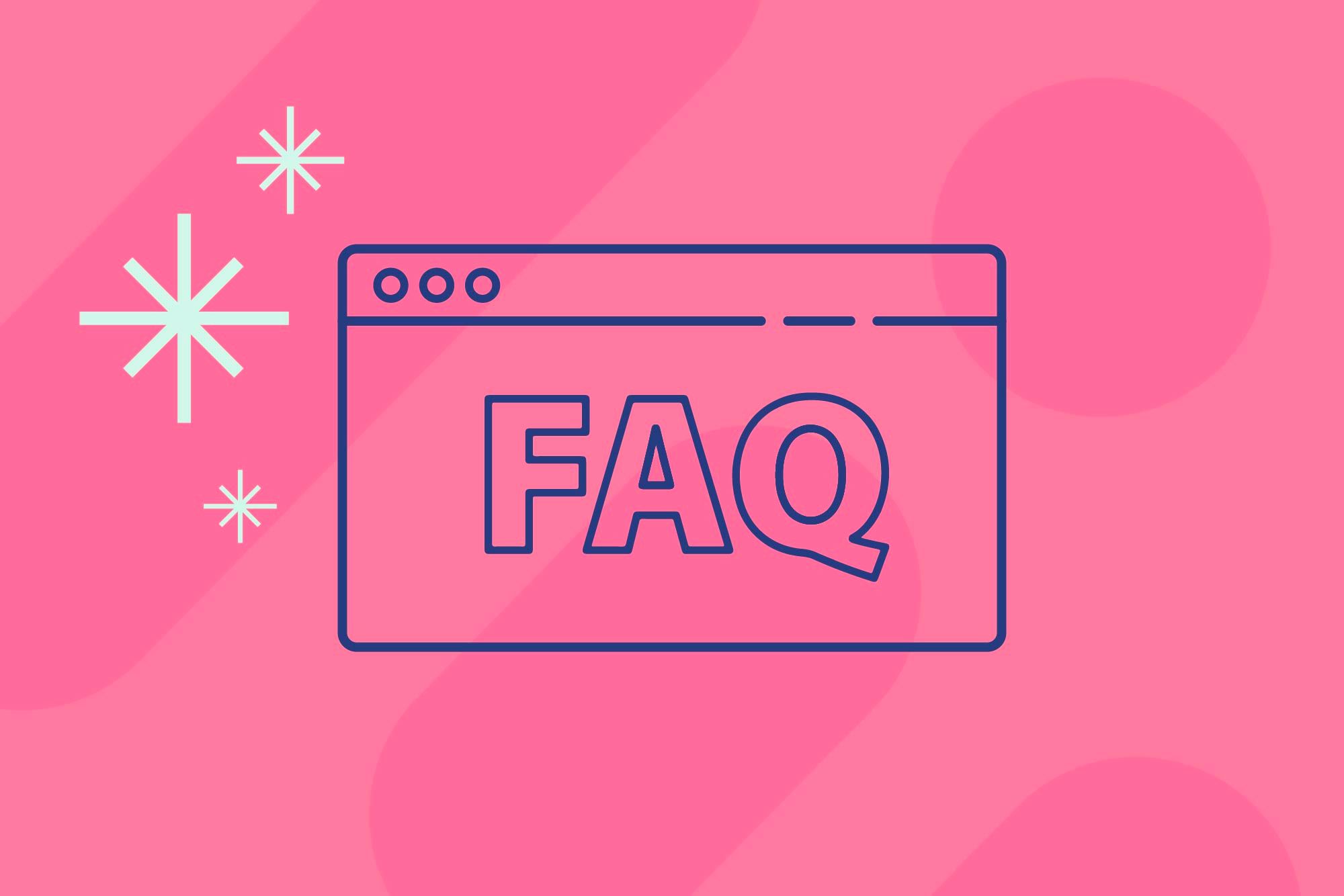You have an idea for an online store and a small budget, but you're unsure how to find suppliers, attract buyers, or maintain healthy margins. A smart Dropshipping marketing strategy that encompasses niche selection, product research, supplier vetting, marketing funnels, and conversion rate optimization distinguishes profitable stores from those that burn cash. This article gives clear, practical steps on how to start digital dropshipping as a business — from choosing a niche and sourcing digital or print-on-demand products to launching an ecommerce site, setting up order fulfillment, and running ads that actually convert. Ready to turn a rough plan into a lean, sellable operation? If you want a faster path, PagePilot's AI page builder helps you create conversion-focused pages and landing funnels without writing code, so you can spend time on product testing, customer acquisition, and scaling your dropshipping business.
Summary
- Digital dropshipping is scaling rapidly, with the broader dropshipping market expected to reach $557.9 billion by 2025. Digital dropshipping is projected to grow at a CAGR of 28.8 percent from 2021 to 2025, indicating that momentum and competition will rise in parallel.
- Digital products already make up a significant share of the channel, accounting for approximately 30 percent of dropshipping sales. E-books and online courses rank among the top five product types, so these formats should be treated as core, testable assets.
- Treat every offer like a short experiment: run 7- to 14-day learning tests with one landing page, three ad creatives, two tightly targeted audiences, and a seed budget of roughly $100 to $300 per product to buy signal, rather than polishing aesthetics.
- Compliance and record-keeping are essential items, not optional extras, given that over 60 percent of digital dropshipping businesses fail within the first year. Automating tax and VAT flows and retaining transaction records for the typical statutory window of about 5 to 7 years is crucial.
- Supplier vetting must be empirical: run approximately 20 live purchases across geographies, accept fewer than two corrupted deliveries out of 20, keep customer complaints under 3 percent, and expect supplier response times to be under 24 hours, as 85 percent of businesses find it challenging to identify reliable suppliers and 60 percent over-rely on reviews.
- Protect margins and scale deliberately, as average gross margins hover near 20 percent. Start with a low-friction entry product and a one-click upsell to raise AOV, and follow an incremental scaling rule, such as increasing ad spend by no more than 20 percent per day while monitoring refund and purchase metrics.
- PagePilot's AI page builder addresses this by generating conversion-focused product pages and matched ad assets from any supplier or competitor URL, compressing setup from days to minutes so teams can run many more rapid, controlled experiments.
What is Digital Dropshipping?

Digital dropshipping involves selling downloadable or access-based products without holding inventory, allowing you to deliver value instantly while handling marketing, customer experience, and pricing. It reduces logistics and fixed costs, but it demands sharper product positioning and faster testing to find what actually converts.
Why Are Merchants Moving From Physical Goods to Digital Products?
Many sellers shift because digital goods remove shipping delays and inventory risk, and deliver higher margin potential per sale when priced correctly. The market’s momentum is real, with the global dropshipping market expected to reach $557.9 billion by 2025, which shows why more entrepreneurs are paying attention.
Digital dropshipping is accelerating rapidly, growing at a projected CAGR of 28.8 percent, so momentum and competition rise in parallel.
What Problems Do Sellers Underestimate?
This pattern consistently appears: sellers assume instant delivery equals instant sales, then face saturated categories, weak ad ROI, or copyright issues with sourced ebooks and courses. It’s exhausting to pour long hours into campaigns that never scale, and that emotional toll pushes some merchants to abandon the model rather than refine it.
You need to treat digital offers like paid experiments, not passive income wishes, because messaging and funnel clarity decide profit more than product type.
How Are Digital Products Actually Delivered and Protected?
Think of delivery mechanisms as the fulfillment stack, including direct download links, membership portals, license key systems, and SaaS onboarding flows. Shopify and similar platforms can host downloads and subscriptions, while automation tools handle post-purchase delivery and access revocation.
The technical choices matter: using a simple download link works for a low-price ebook, but a membership portal with recurring billing protects long-term value and reduces refund risk.
What Does Repeatable Testing Look Like for Digital Dropshipping?
Run high-velocity experiments: pick a narrowly targeted audience, build a single high-converting product page, launch a tight ad set, and measure a handful of metrics—click-through rate, add-to-cart, purchase rate, and refund frequency. The goal is fast learning, not perfection. From my work with sellers scaling tests, the failure mode is obvious: they optimize aesthetics before validating demand, wasting weeks on pages that never receive meaningful traffic.Most teams handle page and creative creation manually because it feels safe and gives control. That familiar approach scales poorly; as you run more tests, building pages and ad creative by hand becomes a bottleneck, resulting in inconsistent messaging and slow iteration cycles.
Compressed Setup and Consistent Testing
Teams find that platforms like AI page builders can import a product link, generate a sales-focused landing page and ad assets in seconds, and deploy directly to Shopify, compressing setup from days to minutes while keeping message consistency and enabling many more tests per week.
How Do You Protect Margins When Ads Are Expensive?
Treat ad spend as a measurement tool, not a production budget. Start small to learn the signal, then scale the winners. Price structure matters: offer clear value with a simple upsell path, and use subscription or licensing models when retention is possible. If paid channels fail, consider pivoting to tighter niches, localized offers, or bundled utilities that reduce the acquisition cost per unit of perceived value.
Digital Dropshipping as a Rapid Lab
A simple image: think of digital dropshipping like a rapid lab for offers, where pages are test tubes and ads are brief heat. You want to run many small experiments, observe which reactions spark, and then scale the formula accordingly. That advantage comes with a catch — the next part reveals which types of digital offers actually survive repeated testing and which ones burn budget fast.
Related Reading
- How to Start Digital Dropshipping
- Dropshipping Mistakes
- Branded Dropshipping
- How to Succeed in Dropshipping
- Is Shopify Only for Dropshipping
- Shopify vs WooCommerce Dropshipping
Popular Digital Dropshipping Products

Courses, ebooks, software/apps, digital art, and subscriptions each behave like distinct sales engines: courses sell on the promise of outcomes, ebooks on sharp niche messaging, software on straightforward utility, art on aesthetics and scarcity, and subscriptions on the promise of ongoing value. Select formats and funnels that align with those selling mechanics, then design a page and upsell path that reinforces the product’s most compelling promise.
How Do You Design Online Courses That Actually Convert?
After working with course creators for six months, a pattern emerged: short, outcome-driven modules win faster than encyclopedic programs, as buyers want a visible first win. Structure a course around a single, measurable outcome, break it into 3 to 6 micro-lessons, display a completion progress bar on the page, and offer a low-friction starter tier, along with a premium tier that includes coaching or templates.
Validation Before Scale
For the landing page, lead with the exact result and the time it takes to achieve it. List three specific lessons as proof, and include a downloadable sample lesson so prospects can judge the content before making a purchase. The emotional truth here is blunt: creators spend weeks building long courses before validating demand, so consider pre-selling or running a low-priced MVP to test willingness to pay.
What Makes an eBook Punch Above Its Price?
A tight niche focus and immediate utility are non-negotiable. Treat an ebook as a productized tool, not a manifesto: include checklists, a one-page action plan, and a companion template or swipe file that buyers can use in under 20 minutes. Price as a tripwire, then use page copy to map the eBook into a larger learning path or bundle with a mini-course.
When packaging, display before-and-after examples and offer a one-click add-on at checkout that increases the average order value while maintaining a low-friction experience.
Why Sell Software and Apps as Dropshipped Digital Goods?
Choose software when the value is recurring or solves a daily friction, as one-off tools are often hard to monetize after the initial purchase. If continuous updates and support are required, consider selling a subscription with staged onboarding and an in-app checklist, as this reduces refunds and clarifies expectations.
For marketing, lead with a short demo clip and a free trial that converts via a single successful task completion, rather than a lengthy feature list. A standard failure mode is underestimating support overhead; therefore, automate first-level help and document the top five user tasks on the product page.
How Do Digital Art and Photography Scale Beyond One-Off Buys?
Use licensing, limited editions, and personalization to create reasons to buy more than once. Present mockups that show the artwork in real settings, offer layered files or print-ready variants for a premium, and test revenue-share partnerships with creators to keep catalog growth cheap. Display a small set of curated bundles tailored to specific customer types, as buyers respond more to context than to catalog breadth.
How Should You Structure Subscriptions to Keep Customers?
Make the weekly or monthly value visible and easy to measure. Offer a clear onboarding promise, a steady cadence of new content or assets, and an exclusive member benefit that can only be accessed inside the subscription. Track trial-to-paid conversions and monthly churn, and trigger personalized outreach before the first renewal if engagement levels drop.
The rule of thumb is simple: subscriptions survive when members see tangible wins at least once per billing cycle.
The Drag of Manual Scaling
Most teams handle page and creative builds manually because it feels familiar and maintains control, but that approach breaks down as you scale. As tests multiply, manual builds create slow iteration cycles, inconsistent messaging across ads and pages, and lost learning because pages drift apart.
AI for Centralized Rapid Experimentation
Platforms like AI page builder centralize import from a supplier or competitor URL, auto-generate a sales-focused product page plus ad assets, and refresh product images with an AI product-image tool, compressing setup from days to minutes while keeping messaging consistent and enabling many more product experiments.Think of each product type like a different tool in a kit: a course is a guided climb, an ebook is a compact multi-tool, software is a power tool, and subscriptions are a reliable daily appliance; you choose the tool that matches the job, then build the page that proves it will work.
A Distinct Strategy
Digital products account for 30% of all dropshipping sales (Do Dropshipping), a share large enough to demand a distinct strategy for digital offers. E-books and online courses rank among the top five most popular digital products, so these formats should be treated as core, testable assets rather than afterthoughts.
AI-Powered Rapid Page Generation
PagePilot's AI page builder helps you test products and angles significantly faster than manual builds, by creating a high-converting product page from any competitor or supplier URL and generating upgraded visuals with the AI Product Image function. Start a FREE Trial and generate 3 product pages for free today, no credit card needed.That progress looks clean on paper, but the next step forces a tougher choice about how to structure your business and cash flow.
How to Start Digital Dropshipping as a Business
Start fast, test fast, and treat each product like a short experiment: pick one tightly framed offer, launch a single sales page with a matched ad, and measure economics over a fixed learning window before you scale. Move only when the numbers and customer behavior align, and automate delivery and support so that execution never disrupts your testing cadence.
How Should You Validate a Product in Days, Not Weeks?
Run a 7 to 14-day learning test with a strict matrix: one landing page variation, three ad creatives, and two tightly defined audiences. Seed each test with a modest budget that buys signal, not vanity metrics, for example, a $100 to $300 initial spend per product, depending on your niche and CPMs.
Ruthless Signal-Gathering
Track the cost per link click, add-to-cart rate, purchase rate, and refund rate. If one creative drives double the purchase rate, lean into that angle and iterate the page copy to match it. After working with store owners across several rapid-test cycles, the pattern was clear: those who transitioned from aesthetic polishing to ruthless signal-gathering found winners in weeks instead of months and avoided the burnout that comes from spinning their wheels on designs that never see traffic.
Where Should You Focus Pricing and Offer Structure First?
Start with an entry product priced low enough to remove friction, then add a clear, one-click upsell that raises average order value without adding complexity. For sellers targeting a realistic side income of €500 to €1,500 per month, the math matters: focus on conversion lift and AOV rather than chasing lower CPAs alone, because modest increases in AOV compound quickly.
Utilize time-limited bundles, license add-ons, or a low-cost subscription trial to transition single-sale economics into recurring revenue that supports scaling.
What Baselines Should You Model for Unit Economics?
Use conservative assumptions to ensure a safe runway. Refer to the average profit margin for digital dropshipping, which is typically around 20% as a baseline when building scenarios. Then run parallel scenarios with higher-margin outcomes by adding upsells and subscriptions, so you know precisely how much CAC each path tolerates.
A simple rule: if your single-sale gross profit barely covers acquisition, you must either raise AOV, add a paid retention layer, or stop scaling that product.
Why Prioritize Delivery, Licensing, and Refund Guardrails Early?
Digital products appear simple until a licensing error or refund wave occurs, erasing weeks of ad spend. Digital products offer high margins, no storage costs, and faster delivery than physical goods, allowing you to lean into speed. However, you cannot shortcut access control and clear licensing terms.
Post-Acquisition Automation and Audit
Automate delivery with one-click license activation or membership gating, keep versioned files in a secure CDN, and instrument refund triggers to identify spikes early. If the refund rate exceeds your acceptable threshold, pause acquisition and run an audit checklist that includes:
- File integrity
- Licensing
- Mock checkout
- Sample customer onboarding
How Do You Scale a Winner Without Collapsing Operations?
Treat the scale as a process, not a volume. Convert your winning test into a repeatable playbook: the exact ad creative, the headline that converted, the pricing, the upsell flow, support templates, and the 24-hour SLA for first response. Use an incrementally aggressive scaling rule, for example, scale ad spend by no more than 20 percent daily while monitoring cost per purchase and refund rate.
Consistency Over Manual Control
Replace manual steps with tools that keep pages and creative consistent, so your messaging doesn't drift as you scale. Most teams handle page and creative builds manually because it feels familiar and gives them control over the process. That approach works initially, but as tests multiply, build time fragments attention and slows learning.
AI for Accelerated Testing and Consistency
Platforms like PagePilot compress setup by importing a product link and generating a sales-focused page, along with matched ad assets, reducing build time from days to minutes and allowing teams to run many more controlled experiments while maintaining message consistency.
What Operational KPIs Should You Watch Weekly?
Focus on four key indicators: cost per purchase, add-to-cart-to-purchase ratio, refund rate, and first-week retention rate for subscriptions. Add one qualitative KPI: support resolution quality measured by follow-up survey or repeat queries about the same issue. When support time per ticket climbs, your scaling is leaking profit and customer goodwill.
Cap daily ad spend on new tests until the refund signal is stable, and enforce an onboarding checklist that every new digital asset must pass before promotion.
The Staged Launch Pipeline
Think of the launch pipeline like a restaurant line: a repeatable recipe, prepped mise en place, a short test cook, then service at scale. When the line is properly staged, you serve more covers without burning the cooks. That solution feels tidy, but the next challenge you cannot ignore is more procedural and far less visible.
Legal Requirements for Selling Digital Dropshipping Products

You need a short, reliable legal stack: pick an appropriate entity, secure resale and IP rights in writing, automate tax collection and record-keeping, and prove delivery and consent for every sale so you can defend revenue and ads quickly.
Legal mistakes cost time and momentum, which helps explain why over 60% of digital dropshipping businesses fail within their first year. This is a reminder that compliance is not optional if you want to survive past the early tests.
Which Business Entity Should I Form?
If you plan to scale beyond a side project, choose an entity that separates personal risk and simplifies contracts. Forming an LLC or electing S-Corp taxation typically protects founders from business judgments and makes supplier agreements simpler, while corporations may suit outside investment.
Expect formation to take one to four weeks and state filing fees to range widely, so budget time and a small retainer for a formation specialist or attorney who can draft an operating agreement that allocates IP, profit shares, and exit terms.
How Do I Draft Supplier and Resale Agreements That Actually Protect Me?
Most sellers accept a supplier email or a marketplace listing as permission to sell, and that is precisely where disputes start. Insist on a written reseller license, ask suppliers to warrant they own or have licensed all embedded assets, and include an indemnity clause that covers copyright claims and refunds tied to IP disputes.
License Ledger and Perpetual Rights
Maintain a license ledger with PDF copies of the license, date-stamped correspondence, and proof of purchase or transfer; treat that ledger as the title papers for each product. If you need a quick clause to request, require the supplier to provide "a perpetual, transferable, worldwide, commercial use license, including:
- Derivative rights and a copy of the source files
- Proof of permit for third-party assets
What Specific Tax and VAT Steps Should You Automate Now?
Tax rules for digital goods vary by jurisdiction, and minor errors can compound quickly at scale. Map where you have nexus, enable automated sales-tax collection through Shopify or a tax service, and register for EU VAT OSS if you expect customers across member states. Digital products can be sold with a markup of up to 200%, so model scenarios with VAT and platform fees included to keep your advertised price, net margin, and breakeven CAC accurate.
Maintain transaction records for the statutory period in your jurisdiction—typically five to seven years—and export monthly reports automatically to reduce audit risk.
How Should You Structure Refund, Delivery, and License Enforcement to Reduce Chargebacks?
Write a short, visible notice at checkout that explains access mechanics, and require a one-click acknowledgment if delivery is immediate. For every sale, log a unique license key or time-limited access token, the buyer’s IP, a timestamp, and a delivery receipt emailed automatically.
Those artifacts are your best defense against chargeback disputes and consumer protection audits. In markets with cooling-off exceptions for immediate digital access, capture a checkbox and a copy of the download link or token so you can prove the buyer waived the right to cancel.
What Privacy and Security Obligations Can Trip You Up?
Treat personal data like a liability you must minimize. Execute Data Processing Agreements with suppliers that process PII, document lawful bases for processing under GDPR or similar laws, and keep retention schedules short.
- Host assets behind authenticated links or a CDN that supports expiring URLs.
- Use TLS everywhere.
- Rotate any API keys or secret credentials regularly to maintain security.
If you collect personal payment data, rely on a PCI-compliant gateway, and avoid storing card details yourself.
The Cost of Scattered Legal Work
Most teams handle legal work by copying boilerplate into a repository or Google Drive, as it feels fast and convenient. That method works during the first ten buys, but when complaints, takedowns, or audits appear, piecing together licenses and deliveries from scattered files can cost days, wipe out a week of ad spend, and often force emergency product pulls.
Platforms like AI page builder centralize delivery logs, license activation, and page-level disclosures with automated records, compressing the time to assemble an audit package from days to hours while keeping messages and receipts in one place.
How Do You Prepare for Platform and Marketplace Rules Without Losing Agility?
Treat marketplace rules as product constraints, not opinions. Maintain a simple compliance checklist for each platform you use, version it, and add a pre-launch gate that confirms prohibited content, required disclosures, and platform-specific refund stances are satisfied. That single checklist prevents last-minute removals that halt ad spend, allowing you to move at experimental speed without legal drama.
Compliance and Automated Proof of Delivery
Two quick, practical items to add today:
- Create one concise Terms of Sale and one short EULA that live on every product page and require checkout acceptance, and
- Automate exportable proof of delivery for every transaction so disputes resolve quickly instead of becoming existential problems.
AI for Compliant Page Generation
Our AI page builder will help you test products and angles more efficiently by creating compliant product pages, logging delivery events, and generating the necessary access controls to reduce disputes. Start a FREE Trial and generate 3 product pages for free today, no credit card needed.That friction you fixed feels like progress, but the next step will reveal which suppliers you can actually trust to keep those legal guarantees intact.
Related Reading
- Facebook Ads for Dropshipping
- Ghost Dropshipping
- SEO for Dropshipping
- Google Ads for Dropshipping
- Organic Dropshipping
- How to Make Tiktok Ads for Dropshipping
- How to Start Dropshipping Business
How to Find Reliable Digital Product Suppliers

You can find reliable digital dropshipping suppliers by running a repeatable audit that combines forensic technical checks, live-sample purchasing, and contractual guardrails tied to measurable performance thresholds. Treat vetting like a short engineering project, not a checklist. Do the heavy work up front, measure supplier health with clear KPIs, then channel only proven products into paid traffic.
What Technical Checks Should I Run First?
Start with file-level verification and delivery resilience. Confirm file integrity with checksums or hashes, open master files to verify layers, fonts, and export presets, and run automated virus and malware scans on every asset. Use reverse-image lookup and metadata inspection to detect recycled or stolen artwork, and test downloads from multiple regions to measure CDN latency and failed download rates. These checks identify problems that reviews often miss, but customers notice immediately.
How Many Live Tests Prove a Supplier is Trustworthy?
Run a small, statistically valid sample over a short window, for example, 20 purchases across different SKUs and geographies within two weeks, and treat any reproducible defects as stop-sell events.
Supplier Quality Gates
Acceptable thresholds include fewer than two corrupted or inaccessible deliveries out of 20, fewer than 3 percent customer complaints about file quality, and a response time of under 24 hours during the trial period. Those concrete gates keep you from spending ad dollars on a supplier that looks fine on paper but fails in market conditions.
How Can I Verify Licensing and Provenance Without Legal Fights?
Request a provenance package, not just a verbal promise: include dated purchase receipts, creator contact details, original asset IDs, and editable source files whenever possible. Cross-check invoices or creator profiles, request transfer evidence for third-party inclusions such as fonts or stock images, and timestamp key documents using a neutral service to maintain a verifiable audit trail.
Think of this as title work for digital goods, because when copyright disputes occur, a clean provenance packet resolves claims faster than arguments.
What Operational Signals Show a Supplier is Stable Over Time?
Monitor the delivery success rate, average support SLA, frequency of catalogue changes, and API error rates, particularly if they offer integrations. A steady supplier returns consistent file versions with version numbers, broadcasts change logs, and responds to support requests within agreed SLAs.
Watch for signs of churn, such as sudden price drops, disappearing product pages, or delayed responses after initial contact; those are leading indicators that quality will slip as you scale.
Fragmentation of Supplier Approvals
Most teams coordinate supplier approvals through email threads because it is familiar and requires no new tools, which works well in the early stages. As approvals multiply and test results arrive, threads fragment, decisions stall, and essential evidence becomes buried in attachments that are difficult to reconcile.
Solutions like PagePilot centralize supplier metadata, delivery logs, and trial results in a single location, allowing teams to review proofs, run automated checks, and close vendor gates in hours rather than days.
How Should I Structure Commercial Risk When Trialing a New Supplier?
Use staged financial commitments, for example, a small upfront payment followed by a holdback of 15 to 25 percent until a 30-day audit of refund and complaint metrics is cleared. Require corrective SLAs in writing and set automatic penalties or purchase pauses if defect or refund thresholds are breached.
This reduces the incentive for fast, low-quality onboarding and protects your ad dollars while the supplier proves reliability.
Why You Must Look Beyond Stars and Directories
Because supplier discovery is hard for most businesses, many teams default to surface signals. 85% of companies find it challenging to identify reliable digital product suppliers, which is why technical verification is crucial. Since 60% of digital product businesses rely on supplier reviews and ratings, you should treat reviews as one input among many, rather than the sole basis for a decision. Automated tests and provenance checks consistently surface issues that ratings miss.
What Ongoing Tooling Should You Automate?
Schedule nightly reverse-image scans for newly added assets, run weekly checksum audits against master files, and track support response times with an SLA dashboard. Pipe these signals into a vendor scorecard that combines technical health, legal provenance, and commercial metrics so you can retire suppliers that fail over time rather than chasing reactive fixes. Treat the scorecard like a living contract, not a one-time approval.Vetting is like inspecting a boat before a voyage; you can admire the hull all you want, but you only leave the dock once the engine, navigation, and lifeboats are proven to work. That simple test separates stores that stop at hopeful listings from those that scale without burning cash.
Related Reading
- How to Make Ads for Dropshipping
- What Should I Name My Dropshipping Store
- Google Trends Dropshipping
- Best Dropshipping Video Ads
- How to Automate Shopify Dropshipping
- Dropshipping Keyword Research
- How to Drive Traffic to Shopify Store
- Branding Dropshipping
Start a FREE Trial and Generate 3 Product Pages with Our AI Page Builder Today
If slow page builds are holding back disciplined tests, try the free PagePilot trial and generate three product pages for free - no credit card required. Real results support the approach: users have reported a 30% increase in conversion rates after using the AI Page Builder, and over 10,000 product pages have been generated with it, allowing you to scale experiments without rebuilding creative each time.






